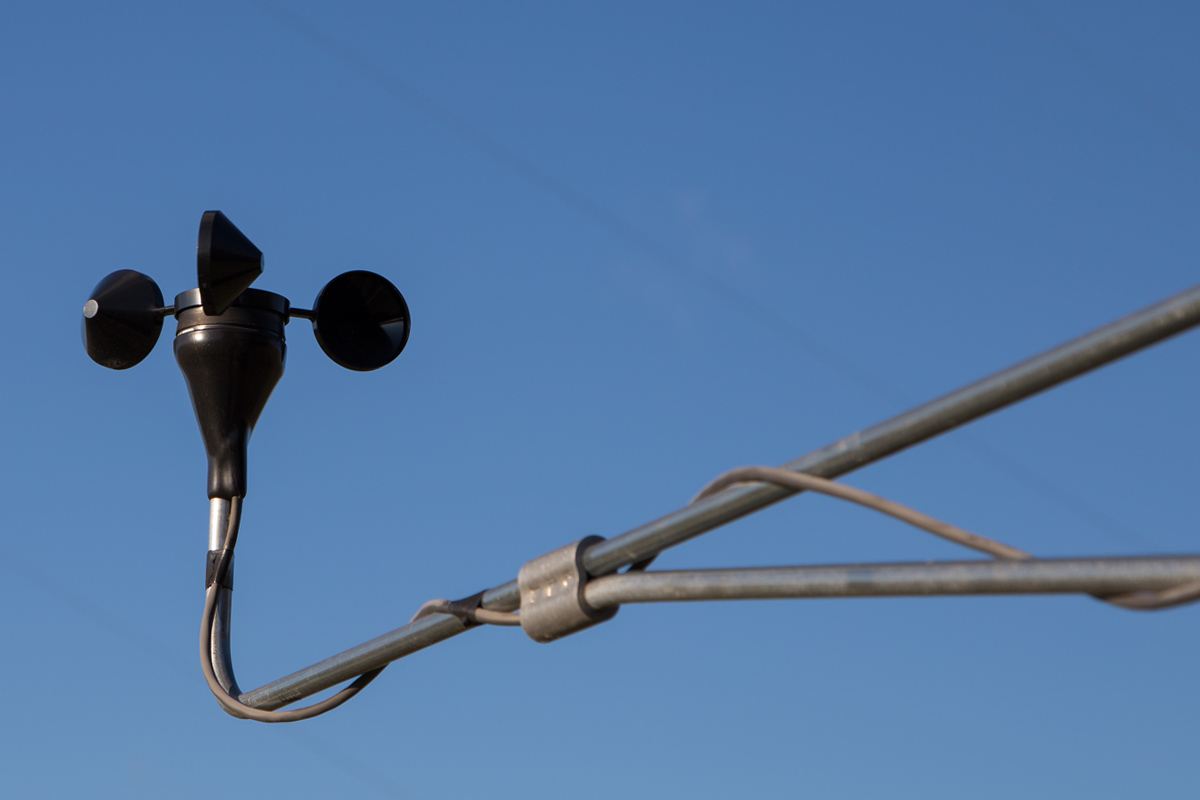Anemometer Innovations: The Most Up To Date Innovation for Wind Rate Measurement
Anemometer Innovations: The Most Up To Date Innovation for Wind Rate Measurement
Blog Article
Anemometers Unveiled: Understanding Their Relevance in Environmental Tracking and Security Procedures
The function of anemometers in environmental tracking and safety actions is typically underestimated, yet their value is undeniable. From weather forecasting to aviation safety and security, anemometers play an important duty in supplying precise data that educates decision-making processes and boosts general security.
Background of Anemometers
The development of anemometers can be mapped back to the ancient human beings where primary wind determining gadgets were first used. These very early wind dimension devices laid the structure for the advancement of a lot more advanced anemometers gradually. Among the earliest well-known anemometers was the hemispherical mug anemometer invented by Leon Battista Alberti in the 15th century. This layout included four hemispherical mugs that collected wind energy, providing a dimension of its intensity based on the rate of rotation.
In the 18th century, the distinguished researcher John Thomas Romney Robinson presented the Robinson anemometer, which included 4 hemispherical mugs mounted on horizontal arms that prolonged from a central axis. This layout became a requirement in meteorological dimensions because of its precision and reliability. Over the years, developments in innovation caused the growth of even more modern anemometers, consisting of ultrasonic anemometers and laser Doppler anemometers, offering increased precision and effectiveness in determining wind rate and direction. The history of anemometers showcases an amazing trip of development and progress in the field of weather forecasting.
Kinds Of Anemometers
Throughout the area of weather forecasting, different sorts of anemometers have actually been established to accurately measure wind rate and direction. One of the most usual type is the mug anemometer, which includes three or 4 mugs placed on horizontal arms that rotate with the wind. As the mugs spin, the speed at which they revolve is directly symmetrical to the wind rate. An additional widely made use of type is the vane anemometer, which features a tail or fin that straightens itself with the wind instructions. This positioning allows the tool to figure out the wind direction. Sonic anemometers use ultrasonic signals to gauge wind speed and instructions precisely. They are commonly used in research applications as a result of their high precision. Hot-wire anemometers run based on the concept that the cooling impact of wind on a heated cable is proportional to the wind speed. These anemometers appropriate for determining low wind rates with high accuracy. Each kind of anemometer has its strengths and is chosen based upon the particular requirements of the surveillance task handy.
Applications in Weather Forecasting
Having actually gone over the various kinds of anemometers made use of in weather forecasting for measuring wind speed and direction, it is necessary to discover their practical applications in the field. Anemometers play a crucial role in meteorology by offering real-time and accurate why not try this out data on wind conditions (anemometer). Meteorologists utilize anemometers to keep an eye on wind rate and direction to forecast climate patterns, issue warnings for extreme climate occasions like tornados, twisters, and storms, and assess weather for air travel security
In meteorology, anemometers help in comprehending local and regional wind patterns, which are essential for forecasting weather condition modifications and identifying climatic trends. These devices are additionally utilized in research to research microclimates, metropolitan heat islands, and air pollution diffusion. Furthermore, anemometers are utilized in farming to enhance plant administration practices, such as irrigation and pesticide application, based on wind problems.
Significance in Air Travel Security
An indispensable element of guaranteeing aeronautics safety depends on the meticulous surveillance of wind conditions utilizing anemometers. Anemometers play an important function in aeronautics by offering real-time information on wind speed and direction, helping pilots in making notified decisions during take-off, landing, and flight. Solid and unforeseeable winds can dramatically impact airplane procedures, making it crucial for aviation authorities to count on accurate wind measurements to ensure the safety and security of passengers and crew.

In the vibrant setting of air travel, where even minor changes in wind speed and direction can have extensive effects, anemometers stand as indispensable devices for promoting protected and secure flight.
Role in Environmental Research Study
Just how do anemometers add to improvements in ecological research? Anemometers play a critical role in ecological study by providing crucial data on wind rate and direction. This info is essential for understanding various atmospheric processes, such as air pollution diffusion, climate patterns, and environment change. By precisely gauging wind features, anemometers assist scientists examine the movement of toxins airborne, analyze the impact of industrial emissions, and anticipate the spread of impurities in the environment.


Final Thought
In verdict, anemometers have played a crucial duty in environmental surveillance and safety and security actions. Recognizing the importance of anemometers is essential for properly measuring wind rate and direction, which is crucial for predicting climate patterns, guaranteeing secure air travel procedures, and conducting environmental researches.
One of the earliest recognized anemometers was the hemispherical mug anemometer created by Leon Battista Alberti in the 15th century. Over the years, developments in modern technology led to the advancement of even more modern anemometers, consisting of ultrasonic anemometers and laser Doppler anemometers, offering boosted accuracy and effectiveness in gauging wind speed and direction. Hot-wire anemometers operate based on the principle that the cooling result of wind on a warmed cable is symmetrical to the wind rate. navigate to this website Meteorologists use anemometers to check wind rate and direction to anticipate climate patterns, issue warnings for extreme climate occasions like tornadoes, typhoons, and storms, and analyze climatic problems for aeronautics safety.
Recognizing the relevance of anemometers is important for properly determining wind rate and direction, which is crucial for anticipating weather condition patterns, making sure safe aeronautics operations, and conducting environmental studies. (anemometer)
Report this page